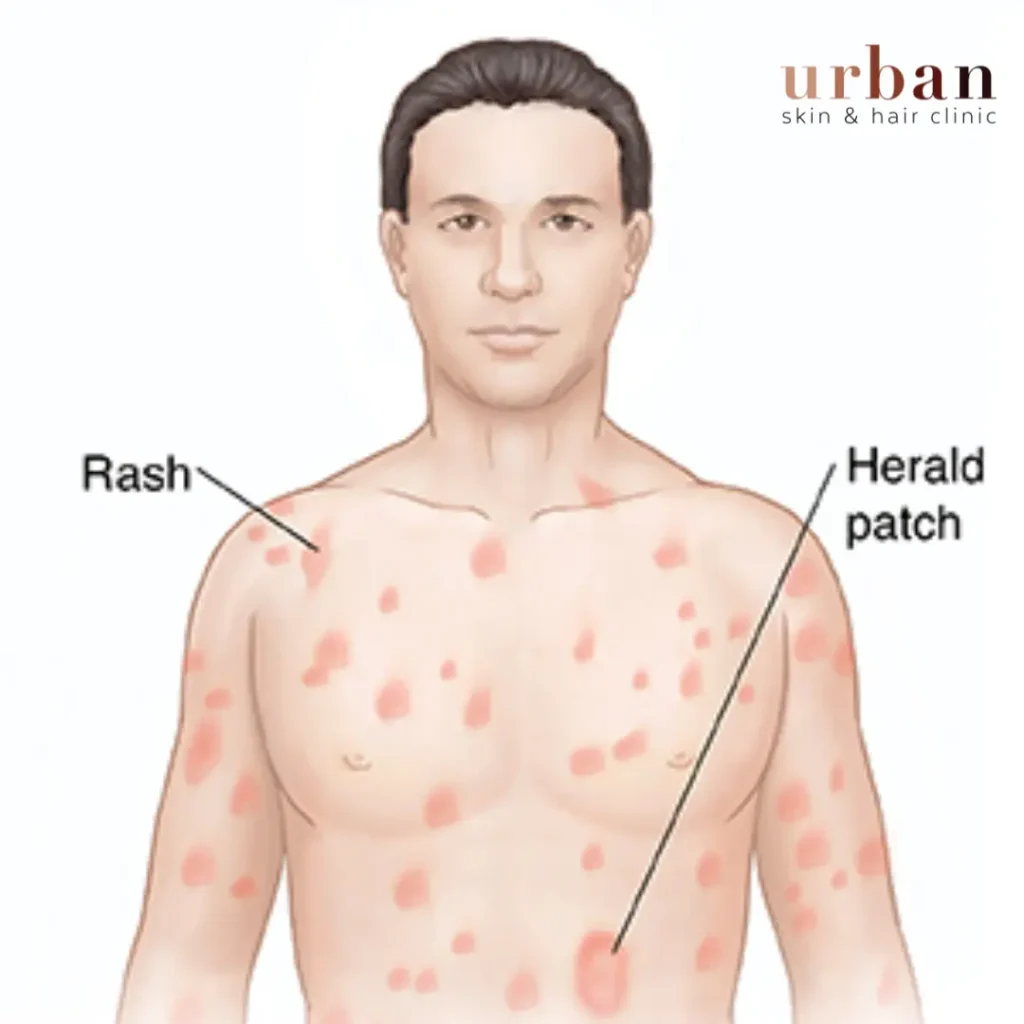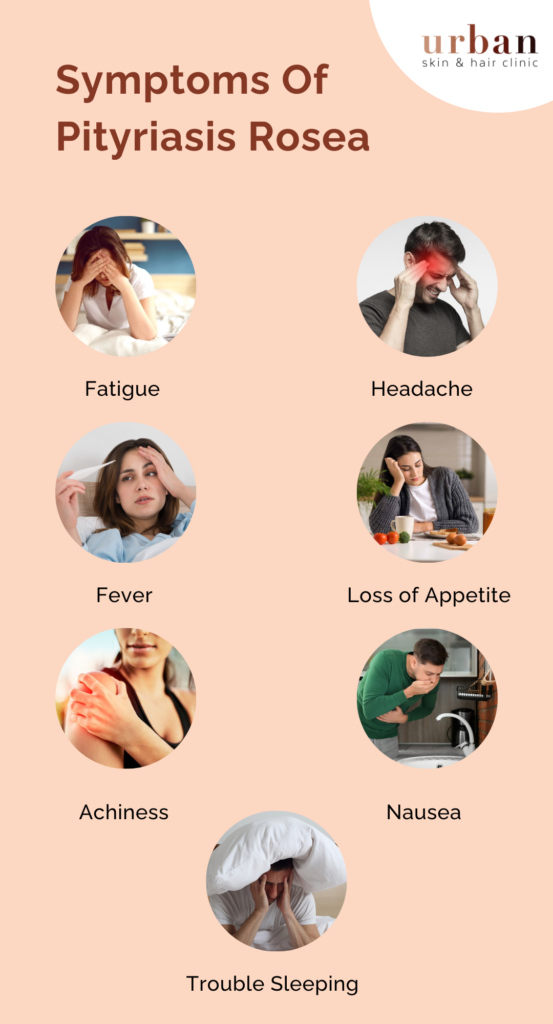
What is Pityriasis Rosea?
Pityriasis Rosea is a common and mild skin condition characterized by a distinctive rash. It starts with a single scaly patch known as the “herald patch” and is followed by smaller patches in a Christmas tree-like pattern on the back, chest, abdomen, and arms.
The rash is typically pink or red and may cause mild itching or discomfort. While the exact cause is unclear, it’s not contagious and often resolves on its own within weeks or months.
For any skin concerns, including Pityriasis Rosea, seek professional evaluation and personalized treatment for the best results.
What are the Types of Pityriasis Rosea
Pityriasis Rosea primarily occurs in one main form, but it can exhibit slight variations in its presentation. Here are the key types:
- Classic Pityriasis Rosea: This is the most common type and follows the typical pattern. It begins with a single, larger “herald patch” and is followed by smaller patches spreading across the body in a symmetrical, Christmas tree-like pattern.
- Inverse Pityriasis Rosea: In this type, the rash appears in areas with skin folds, such as the armpits, groin, or under the breasts. It may be more challenging to diagnose due to its location, but it shares similar characteristics with the classic form.
- Giant Pityriasis Rosea: This type is relatively rare and involves larger and more pronounced patches than the classic form. The rash may be more extensive and take longer to resolve.
- Unilateral Pityriasis Rosea: Unlike the usual symmetrical distribution, this type affects only one side of the body. It is less common but follows the same course of self-resolution as other types.
While these variations exist, the underlying nature of Pityriasis Rosea remains generally benign and self-limiting. In all cases, proper evaluation and diagnosis by a dermatologist can help confirm the type and guide the appropriate management to ensure a smooth recovery.

signs & Symptoms Of Pityriasis Rosea?
Recognizing the signs and symptoms of Pityriasis Rosea is crucial in identifying this skin condition and seeking timely care. Here are the key indicators:
- Pink or Red Coloration: The rash typically exhibits pink or red coloration, which can be more apparent in lighter skin tones. The patches may also be slightly raised or have a fine scale on their surface.
- Mild Itching or Discomfort: While not everyone with Pityriasis Rosea experiences symptoms, some individuals may notice mild itching or discomfort associated with the rash. The itching is usually not severe and tends to improve as the rash progresses.
- Other Symptoms: Apart from the characteristic rash and mild itching, Pityriasis Rosea does not typically cause severe symptoms. However, in some cases, individuals may experience other mild and non-specific symptoms, such as:
- Fatigue: Some people with Pityriasis Rosea may feel more tired than usual, experiencing a sense of low energy or fatigue.
- Headache: Occasional headaches have been reported by a few individuals during the course of Pityriasis Rosea.
- Fever: While not common, a low-grade fever may accompany Pityriasis Rosea in rare instances.
- Loss of Appetite: A temporary loss of appetite has been observed in a small number of cases.
- Achiness: Mild body aches or discomfort may be present but are generally not severe.
- Nausea: Some individuals may experience mild nausea, though this symptom is infrequent.
- Trouble Sleeping: A few people with Pityriasis Rosea may encounter difficulties falling or staying asleep, but this is not a common symptom.
- Fatigue: Some people with Pityriasis Rosea may feel more tired than usual, experiencing a sense of low energy or fatigue.

Treatment For Pityriasis Rosea
Pityriasis Rosea is a self-limiting condition that typically resolves on its own without specific medical treatment. However, managing the symptoms and promoting comfort during the rash’s duration is essential. Here are some general treatment approaches that can be beneficial:
Keeping the skin well-moisturized can help reduce itching and discomfort. Using mild, fragrance-free moisturizers or emollients is recommended. Avoiding harsh soaps and hot water can also prevent further irritation.
In cases where itching or inflammation is bothersome, a dermatologist may prescribe topical corticosteroids. These medications can help reduce redness, swelling, and itching, promoting faster symptom relief.
Over-the-counter antihistamines can be used to alleviate itching and improve sleep quality if nighttime itching is a concern.
For individuals with severe or persistent Pityriasis Rosea, phototherapy (light therapy) may be considered. This treatment involves exposing the affected skin to controlled doses of ultraviolet (UV) light, which can help expedite the resolution of the rash.
If you suspect you have Pityriasis Rosea or any other skin condition, seeking professional evaluation from a qualified dermatologist is essential. They can confirm the diagnosis, rule out other skin conditions, and provide personalized recommendations for your specific situation.
However, with the right approach and expert guidance from Urban Skin & Hair Clinic, you can achieve healthy, hydrated, and lustrous locks. Don’t let dry frizzy hair hold you back – take the first step towards beautiful hair by scheduling a consultation with our experienced team today!


